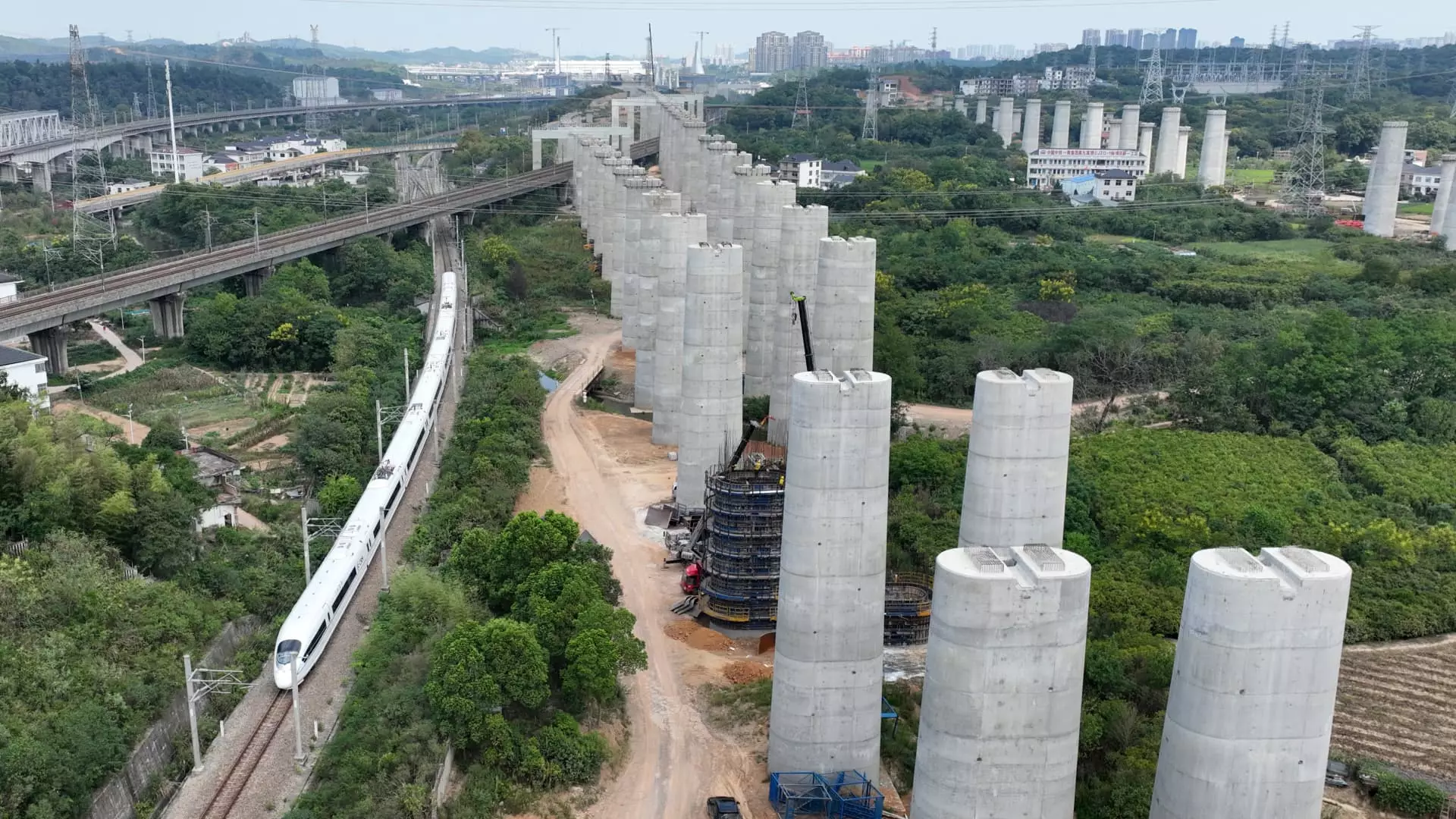China’s current economic malaise can be traced back to a real estate sector that has faced a significant downturn over the past few years. As the backbone of household wealth accumulation in the nation for the last two decades, real estate investments have become a double-edged sword for Chinese consumers and local governments. The problems emerged prominently when Beijing initiated a crackdown on real estate developers’ dependence on high debt levels in 2020. This decisive move aimed at regulating an overheated sector inadvertently triggered a cascade of adverse economic effects, contributing to a broader slowdown in consumer spending.
This financial downturn reverberates through the economy, culminating in declining property values and a sharp reduction in new land purchases by developers. Local governments, which heavily rely on revenue from land sales, faced a significant financial crunch as a direct consequence of these events. Analysts from S&P Global Ratings predict that it could take as long as five years for local government finances to stabilize. According to Wenyin Huang, a director at S&P, any delay in revenue recovery will prolong the already rising debt levels, further hindering economic stability.
The Pain of Local Governments Amidst Revenue Stream Challenges
Local governments in China have historically relied on land sales and taxes as primary sources of revenue. However, the latest data reveals a concerning trend: local authorities are struggling to recover from the plummeting land sale revenues that have persisted for the last two or three years. Compounding the issue is the series of tax and fee reductions imposed since 2018 that have further eroded operational revenue by approximately 10%.
The increased urgency for local governments to refill their coffers has led to aggressive tax recovery measures, which serve to further alienate already strained businesses. Companies have reported receiving notices from regional authorities demanding repayment of back taxes for as far back as 1994, revealing an unsettling trend of retroactive financial assessments. This scrutiny can be seen in cases like NingBo BoHui Chemical Technology, which was ordered to pay back hundreds of millions in laboriously calculated revised consumption taxes—an act that has incited unease among firms regarding their fiscal responsibilities and stifled hiring and salary growth.
Consumer Sentiment in a Tough Economic Climate
The implications of diminished local government revenue extend beyond government accounts. As businesses grapple with the stress of historical tax bills, consumer confidence—already fragile due to the pandemic—has remained stagnant. The CKGSB Business Conditions Index, a key indicator of business health, has hovered around the neutral mark of 50, dipping to 48.6 in August. Despite slight upticks in retail sales, they remain amongst the slowest levels witnessed since the COVID-19 pandemic, reflecting widespread uncertainty regarding future income security.
Camille Boullenois, from Rhodium Group, posits that the aggressive efforts to recoup historic tax payments highlight the government’s desperation to find new sources of revenue. Such measures threaten to create an additional layer of anxiety for consumers, leading to hesitant spending, which is essential for any economic recovery.
The critical factor in reversing these economic trends lies in enhancing revenue streams. Growth should, in theory, be the catalyst for improving local government finances. Yet, the government’s focus is squarely on reducing debt levels, constraining the necessary pivot toward consumption-driven growth. Analysts from Morgan Stanley note that while investment has been favored historically, it has resulted in weak nominal GDP growth outcomes, further pressuring corporate sectors to reduce wages and increasing overall debt ratios.
China’s debt-to-GDP ratio has surged alarmingly by nearly 30 percentage points since 2021, escalating to 310% by mid-2024. In an increasingly rigid state-dominated economy, this presents a major challenge for policymakers attempting to shift strategies. Local government financing vehicles (LGFVs), designed to fund infrastructure projects, represent a greater systemic risk than the struggling real estate sector.
Navigating the economic landscape of China requires confronting a complex interplay of factors rooted within local government financing and broader economic policies. As authorities strive to maintain stability and address liquidity challenges, the need for innovative strategies to expand revenue streams persists. Without substantial shifts in how government expenditure is managed and investment priorities are realigned, the cycle of debt accumulation, declining consumption, and restricted growth may continue. As local governments attempt to stabilize, ensuring consumer confidence becomes paramount for revitalizing an economy hampered by its dependence on a faltering real estate sector and fluctuating revenue streams.

